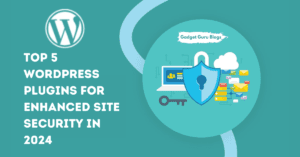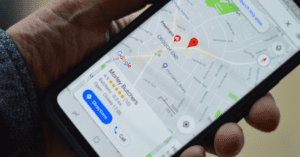Introduction
In today’s interconnected world, social media has emerged as a powerful tool for communication, connecting people from all walks of life. However, beneath the surface of its seemingly boundless benefits lies a hidden, darker side. In The Dark Side of Social Media, this blog post sheds light on the unexpected consequences that accompany the widespread use of social media. From privacy concerns to mental health impacts, we will explore the intricate web of issues that make up the dark side of social media. Join us as we delve into this intriguing and often overlooked aspect of our digital age.
Table of Contents
Understanding the Dark Side
Social media platforms, initially designed to foster communication and bring people together, have inadvertently given rise to a myriad of issues. From mental health concerns to privacy breaches, the darker aspects of social media have become increasingly apparent.
Impact on Mental Health
One of the most pressing issues associated with the dark side of social media is its profound impact on mental health. The constant comparison fueled by curated online personas, the pressure to conform to unrealistic standards, and the addictive nature of these platforms contribute to a surge in anxiety, depression, and feelings of inadequacy among users.
Privacy Concerns and Data Security
As we willingly share our lives online, the line between public and private becomes blurred. The dark side reveals itself through rampant data breaches, identity thefts, and the unauthorized use of personal information. Users find themselves at the mercy of algorithms and targeted advertising, eroding the semblance of control over their own digital footprint.
The Rise of Cyberbullying
With the cloak of anonymity that social media provides, cyberbullying has emerged as a prevalent issue. The dark side showcases instances of harassment, online threats, and the lasting psychological effects on victims. The virtual world, once considered an escape, has become a breeding ground for hostility and aggression.
Exploring Harsh Realities
The dark side of social media extends beyond individual experiences to impact entire communities. Online platforms often amplify divisive narratives, fostering a sense of ‘us versus them.’ This contributes to the polarization of societies, creating echo chambers that reinforce pre-existing beliefs and stifle open dialogue.
Effects on Individuals and Communities
The consequences of the dark side are not confined to the digital realm. Real-world implications include strained relationships, damaged self-esteem, and even instances of self-harm. Social media, rather than fostering genuine connections, can lead to isolation and alienation.
Manipulation and Propaganda
As social media platforms wield immense influence, the dark side unveils the insidious use of these platforms for manipulation and propaganda. Malicious actors exploit algorithms and echo chambers to spread misinformation, shaping public opinion and influencing political landscapes.
Unveiling Disinformation Campaigns
Disinformation campaigns thrive in the echo chambers of social media, sowing seeds of doubt and confusion. The dark side reveals the extent to which false narratives can be disseminated, eroding trust in institutions and undermining the foundations of democracy.
Political Influence and Polarization
The dark side extends its reach into the political sphere, where social media becomes a battleground for ideologies. The polarization of political discourse is exacerbated as echo chambers amplify extreme views, fostering an environment where compromise and understanding become increasingly elusive.
Addressing the Dark Side
While the dark side of social media presents a daunting reality, addressing these issues is paramount for the well-being of individuals and societies at large.
Steps for Personal Well-being
Individuals can take proactive steps to mitigate the negative effects of social media. This includes setting boundaries, curating a positive online environment, and being mindful of the impact that online interactions can have on mental health.
Regulations and Social Responsibility
Governments, tech companies, and users share the responsibility of addressing the dark side. Stricter regulations on data privacy, algorithm transparency, and combating cyberbullying are essential steps. Users, in turn, must exercise digital literacy, questioning the information they encounter and promoting healthy online behaviors.
Conclusion
In the pursuit of connection, we have inadvertently uncovered the dark side of social media. From mental health challenges to privacy concerns and the erosion of societal cohesion, the consequences are vast and complex. As we navigate this digital landscape, acknowledging and addressing the dark side is not just a choice but a necessity for a healthier, more connected future. By understanding the unexpected consequences and taking collective action, we can strive to reclaim the positive potential of social media while mitigating its darker shadows.






